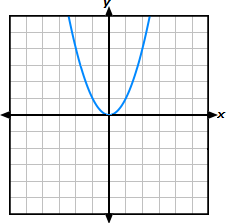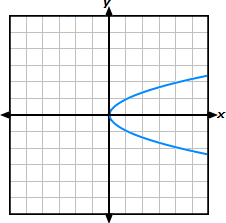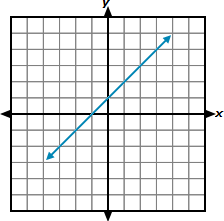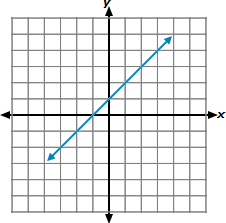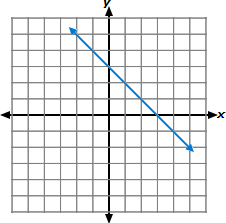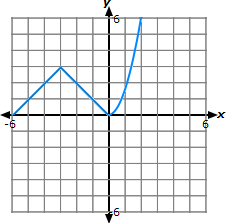Functions
8th Grade
|
|
|
Alabama Course of Study Standards:
13
|
Determine whether a relation is a function, defining a function as a rule that assigns to each input (independent
value) exactly one output (dependent value), and given a graph, table, mapping, or set of ordered pairs. |
Arizona Academic Standards:
8.F.A.1
|
Understand that a function is a rule that assigns to each input exactly one output. The graph of a function is the set of ordered pairs consisting of an input and the corresponding output. (Function notation is not required in
Grade 8.) |
Common Core State Standards:
Math.8.F.1 or 8.F.A.1
|
Understand that a function is a rule that assigns to each input exactly one output. The graph of a function is the set of ordered pairs consisting of an input and the corresponding output. |
Georgia Math and ELA Standards:
8.FGR.5.1
|
Show and explain that a function is a rule that assigns to each input exactly one output. |
Louisiana Academic Standards:
8.F.A.1
|
Understand that a function is a rule that assigns to each input exactly one output. The graph of a function is the set of ordered pairs consisting of an input and the corresponding output. (Function notation is not required in
this grade level.) |
North Carolina - Standard Course of Study:
8.F.1
|
Understand that a function is a rule that assigns to each input exactly one output.- Recognize functions when graphed as the set of ordered pairs consisting of an input and exactly one corresponding
output.
- Recognize functions given a table of values or a set of ordered pairs.
|
New York State Next Generation Learning Standards:
8.F.1
|
Understand that a function is a rule that assigns to each input exactly one output. The graph of a function is the set of ordered pairs consisting of an input and the corresponding output.
Note: The terms domain and range may be introduced at this level; however, these terms are formally introduced in Algebra I (AI-F.IF.1). |
Ohio's Learning Standards:
8.F.1
|
Understand that a function is a rule that assigns to each input exactly one output. The graph of a function is the set of ordered pairs consisting of an input and the corresponding output. Function notation is not required in Grade 8. |
Tennessee Academic Standards:
8.F.A.1
|
Understand that a function is a rule that assigns to each input exactly one output. The graph of a function is the set of ordered pairs consisting of an input and the corresponding output. (Function notation is not required in 8th grade.) |
Wisconsin Academic Standards:
8.F.A.1
|
Understand that a function is a rule that assigns to each input exactly one output. The graph of a numerically valued function is the set of ordered pairs consisting of an input and the corresponding output. Function notation is not required in Grade 8. |
Alabama Course of Study Standards:
15
|
Compare properties of functions represented algebraically, graphically, numerically in tables, or by verbal
descriptions.- Distinguish between linear and non-linear functions.
|
Common Core State Standards:
Math.8.F.2 or 8.F.A.2
|
Compare properties of two functions each represented in a different way (algebraically, graphically, numerically in tables, or by verbal descriptions). For example, given a linear function represented by a table of values and a linear function represented by an algebraic expression, determine which function has the greater rate of change.
|
Georgia Math and ELA Standards:
8.FGR.5.4
|
Compare properties (rate of change and initial value) of two functions used to model an authentic situation each represented in a different way (algebraically, graphically, numerically in tables, or by verbal descriptions). |
North Carolina - Standard Course of Study:
8.F.2
|
Compare properties of two linear functions each represented in a different way (algebraically, graphically, numerically in tables, or by verbal descriptions). |
New York State Next Generation Learning Standards:
8.F.2
|
Compare properties of two functions each represented in a different way (algebraically, graphically, numerically in tables, or by verbal descriptions).
e.g., Given a linear function represented by a table of values and a linear function represented by an algebraic equation, determine which function has the greater rate of change. |
Wisconsin Academic Standards:
8.F.A.2
|
Compare properties of two functions each represented in a different way (algebraically, graphically, numerically in tables, or by verbal descriptions).
For example, given a linear function represented by a table of values and a linear function represented by an algebraic expression, determine which function has the greater rate of change. |
Alabama Course of Study Standards:
14
|
Evaluate functions defined by a rule or an equation, given values for the independent variable. |
Arizona Academic Standards:
8.F.A.3
|
Interpret the equation y = mx + b as defining a linear function whose graph is a straight line; give examples of functions that are not linear. For example, the function A = s2 giving the area of a square as a function of its side length in not linear because its graph contains the points (1,1), (2,4), and (3,9) which are not on a straight line. |
Common Core State Standards:
Math.8.F.3 or 8.F.A.3
|
Interpret the equation y = mx + b as defining a linear function, whose graph is a straight line; give examples of functions that are not linear. For example, the function A = s2 giving the area of a square as a function of its side length is not linear because its graph contains the points (1,1), (2,4) and (3,9), which are not on a straight line. |
Georgia Math and ELA Standards:
8.FGR.5.5
|
Write and explain the equations y = mx + b (slope-intercept form), Ax + By = C (standard form), and (y - y1) = m(x-x1) (point-slope form) as defining a linear function whose graph is a straight line to reveal and explain different properties of the function. |
North Carolina - Standard Course of Study:
8.F.3
|
Identify linear functions from tables, equations, and graphs. |
New York State Next Generation Learning Standards:
8.F.3
|
Interpret the equation y = mx + b as defining a linear function, whose graph is a straight line. Recognize examples of functions that are linear and non-linear.
The function A = s2 giving the area of a square as a function of its side length is not linear because its graph contains the points (1,1), (2,4), and (3,9), which are not on a straight line. |
Wisconsin Academic Standards:
8.F.A.3
|
Interpret the equation y = mx + b as defining a linear function, whose graph is a straight line; give examples of functions that are not linear.
For example, the function A = s2 giving the area of a square as a function of its side length is not linear because its graph contains the points (1,1), (2,4) and (3,9), which are not on a straight line. |
Alabama Course of Study Standards:
17
|
Analyze the relationship (increasing or decreasing, linear or non-linear) between two quantities represented in a
graph. |
Common Core State Standards:
Math.8.F.5 or 8.F.B.5
|
Describe qualitatively the functional relationship between two quantities by analyzing a graph (e.g., where the function is increasing or decreasing, linear or nonlinear). Sketch a graph that exhibits the qualitative features of a function that has been described verbally. |
Georgia Math and ELA Standards:
8.FGR.5.9
|
Graph and analyze linear functions expressed in various algebraic forms and show key characteristics of the graph to describe applicable situations. |
North Carolina - Standard Course of Study:
8.F.5
|
Qualitatively analyze the functional relationship between two quantities.- Analyze a graph determining where the function is increasing or decreasing; linear or non-linear.
- Sketch a graph that exhibits the qualitative features of a real-world function.
|
New York State Next Generation Learning Standards:
8.F.5
|
Describe qualitatively the functional relationship between two quantities by analyzing a graph.
e.g., where the function is increasing or decreasing or when the function is linear or non-linear
Sketch a graph that exhibits the qualitative features of a function that has been described in a real-world context. |
Pennsylvania Core Standards:
CC.2.2.8.C.1
|
Define, evaluate, and compare functions. |
Pennsylvania Core Standards:
M08.B-F.1.1.1
|
Determine whether a relation is a function. |
Pennsylvania Core Standards:
M08.B-F.1.1.2
|
Compare properties of two functions, each represented in a different way (i.e., algebraically, graphically, numerically in tables, or by verbal descriptions). |
Pennsylvania Core Standards:
M08.B-F.1.1.3
|
Interpret the equation y = mx + b as defining a linear function whose graph is a straight line; give examples of functions that are not linear. |
Pennsylvania Core Standards:
M08.B-F.2.1.2
|
Describe qualitatively the functional relationship between two quantities by analyzing a graph (e.g., where the function is increasing or decreasing, linear or nonlinear). Sketch or determine a graph that exhibits the qualitative features of a function that has been described verbally. |
Florida - Benchmarks for Excellent Student Thinking:
MA.8.F.1.1
|
Given a set of ordered pairs, a table, a graph or mapping diagram, determine whether the relationship is a function. Identify the domain and range of the relation. |
Florida - Benchmarks for Excellent Student Thinking:
MA.8.F.1.2
|
Given a function defined by a graph or an equation, determine whether the function is a linear function.Given an input-output table, determine whether it could represent a linear function. |
Florida - Benchmarks for Excellent Student Thinking:
MA.8.F.1.3
|
Analyze a real-world written description or graphical representation of a functional relationship between two quantities and identify where the function is increasing, decreasing or constant. |
Georgia Math and ELA Standards:
8.FGR.5.1
|
Show and explain that a function is a rule
that assigns to each input exactly one
output.
|
Georgia Math and ELA Standards:
8.FGR.5.2
|
Within realistic situations, identify and
describe examples of functions that are
linear or nonlinear. Sketch a graph that
exhibits the qualitative features of a
function that has been described verbally. |
Georgia Math and ELA Standards:
8.FGR.5.3
|
Relate the domain of a linear function to its
graph and where applicable to the
quantitative relationship it describes. |
Georgia Math and ELA Standards:
8.FGR.5.4
|
Compare properties (rate of change and
initial value) of two functions used to model
an authentic situation each represented in a
different way (algebraically, graphically,
numerically in tables, or by verbal
descriptions). |
Arkansas Academic Standards:
8.FN.3
|
Determine whether a relation is a function or not when given a function map, table, graph, equation, or set of ordered pairs. |
Arkansas Academic Standards:
8.FN.4
|
Compare the rate of change (slope) and y-intercept (initial value) of two linear functions each represented in different forms.- Functions are represented algebraically, graphically, numerically in tables, or by verbal descriptions.
|
Arkansas Academic Standards:
8.FN.5
|
Distinguish between linear and nonlinear functions by comparing graphs and equations. |
Arkansas Academic Standards:
8.FN.6
|
Determine the rate of change (slope) and y-intercept (initial value) from tables, graphs, equations, and verbal descriptions of linear relationships. |
Arkansas Academic Standards:
8.FN.7
|
Interpret and explain the meaning of the rate of change (slope) and y-intercept (initial value) of a linear relationship in a real-world context. |
Arkansas Academic Standards:
8.FN.8
|
Analyze a graph by describing the functional relationships between two quantities. |
Arkansas Academic Standards:
8.FN.9
|
Sketch a graph that exhibits qualitative features of a function described verbally. |
|
|


 8th Grade Math - Functions Lesson
8th Grade Math - Functions Lesson



